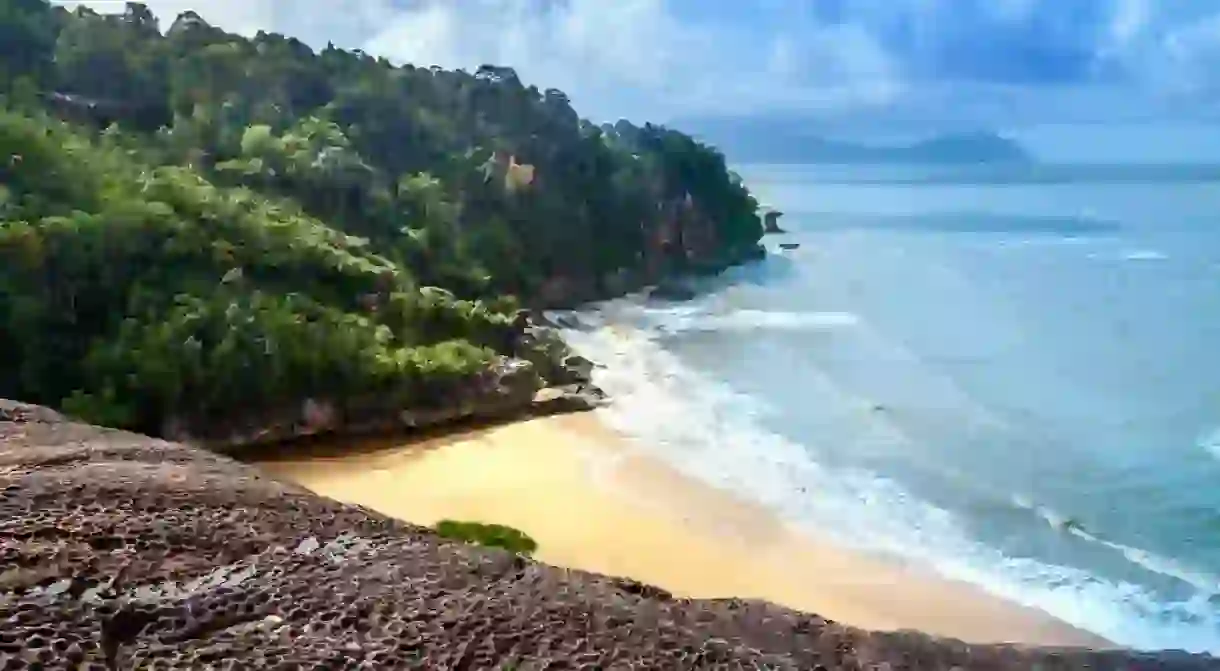A Guide to Sarawak's Bako National Park

Bako National Park is known for its unparalleled biodiversity, spectacular landscapes, beaches, and wild proboscis monkeys an hour away from Kuching. Here’s our guide to Sarawak’s most popular national park located some 37 kilometres (23 miles) northeast of Kuching on the Muara Tebas Peninsular.
What is Bako National Park?
Bako became classified as a protected area in 1957, making it the oldest national park in Sarawak. Covering just 27 square kilometres, it’s also among the smallest. But despite the size, Bako National Park offers diverse landscapes such as steep coastline cliffs, dense rainforests, tropical beaches and intriguing rock formations. Streams and rivers transverse and penetrate the forest’s dense foliage. A total of 18 colour-coded walking trails and boardwalks of varying difficulty and length take visitors through the national park. Follow the Pandan Kecil Trail to the beach or the Lintang Loop Trail to experience Bako’s diverse ecosystems and habitats.

Bako National Park’s incredible biodiversity
Bako National Park has an astonishing amount of flora and fauna for its relatively small size. Almost all of Borneo’s known plants, including the carnivorous pitcher plants and elegant orchids, grow here. A range of wildlife such as long-tailed macaques, silver leaf monkeys, flying lemurs and slow loris as well as civets, pangolins and mouse deer call Bako National Park home. Expect to find several biomes and ecosystems, including mangroves, grasslands, swamps, beaches and dipterocarp forests with more than 190 species of birds. Each habitat houses different species of plants, flowers and wildlife.


The best place in Sarawak to see wild proboscis monkeys
The national park’s biggest highlight is the estimated 150 to 250 wild proboscis monkeys. The protected pot-bellied, long-nosed primates contribute heavily towards tourist numbers. Groups tend to live near Park HQ as well as at Telok Delima and Telok Paku. Observing the critters swinging from the trees and posing with both their arms and legs spread like a giant ‘X’ is a once-in-a-lifetime experience. But remember, just because Bako National Park has a large population, it’s not guaranteed they’ll be around.

Practical information for visitors
Bako opens daily from 8:00am to 5:00pm. Either take the red public bus number one from central Kuching to Bako Market for RM4 ($1), find a taxi, or join an organised tour. After arriving at the Jetty, buy the entrance ticket at RM20 ($5) for foreigners and RM10 ($2.50) for Malaysians, before taking a boat ride along the Santubong River to Bako National Park HQ. Boats cost RM20 ($5) for foreigners and RM15 ($3.80) for Malaysians per person each way. After arriving at HQ, visitors can each take another boat through the mangroves and to the beaches and islands at an additional cost, or follow the trails through the jungle.
Travel tips
Tourists who want to fully experience Bako National Park and have the chance to see its wildlife, habitats and environments should consider an overnight stay. The jungle is at its most active around dusk. Accommodations include chalets, hostels and camping facilities. Those looking to hike need to allocate between two to six hours, depending on the trail and difficulty. Bring plenty of fluids as dehydration is a real threat in the hot and humid rainforest. And finally, stick to the trails and don’t venture near the mangroves as the deadly (and hungry) saltwater crocodiles might be lurking and waiting for their next meal!














